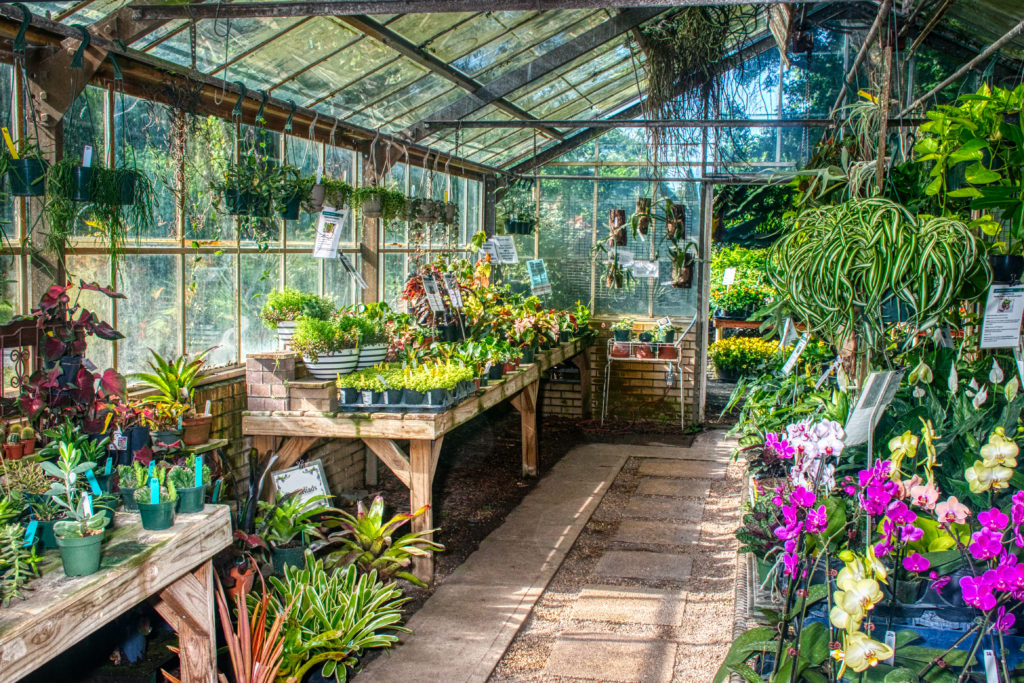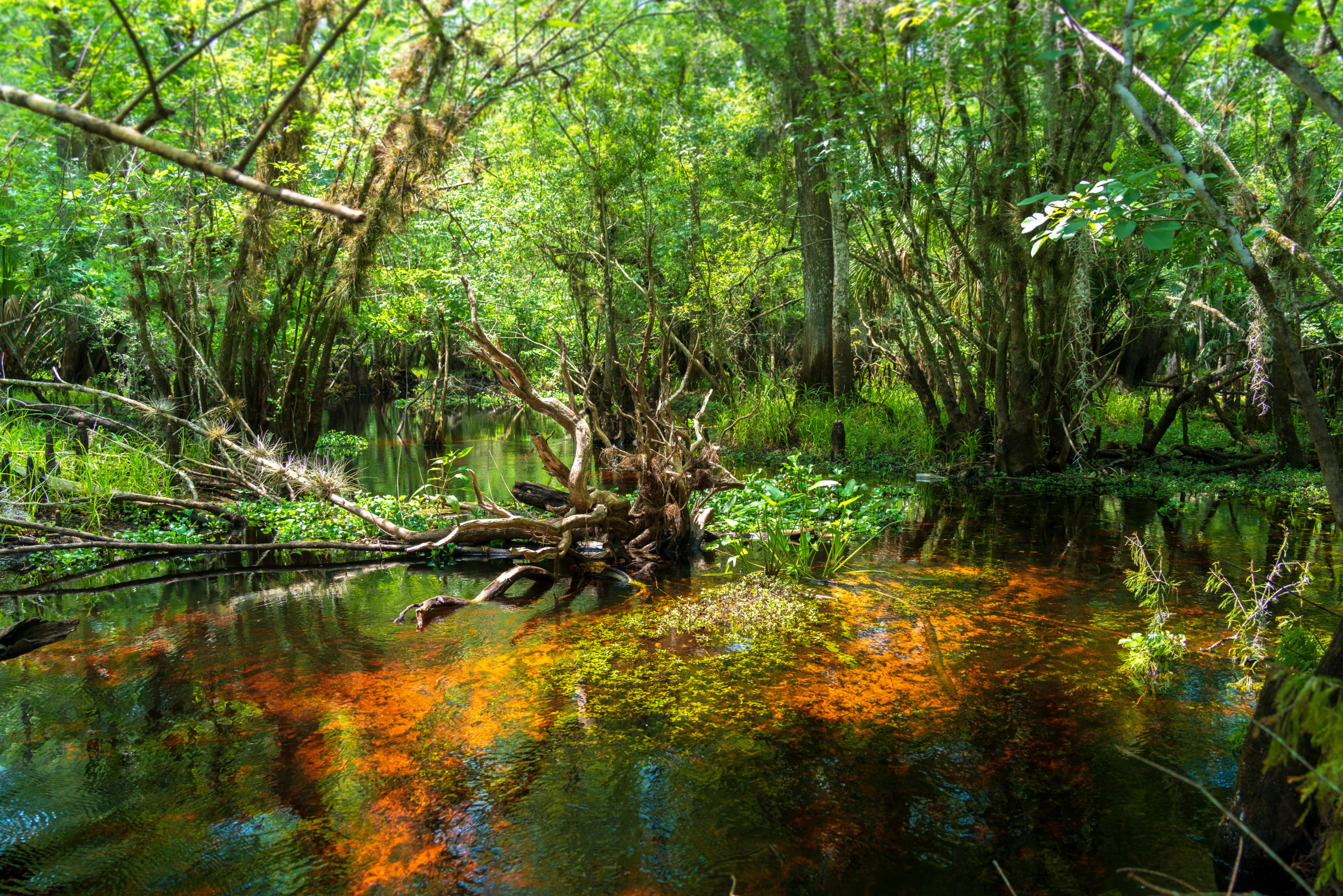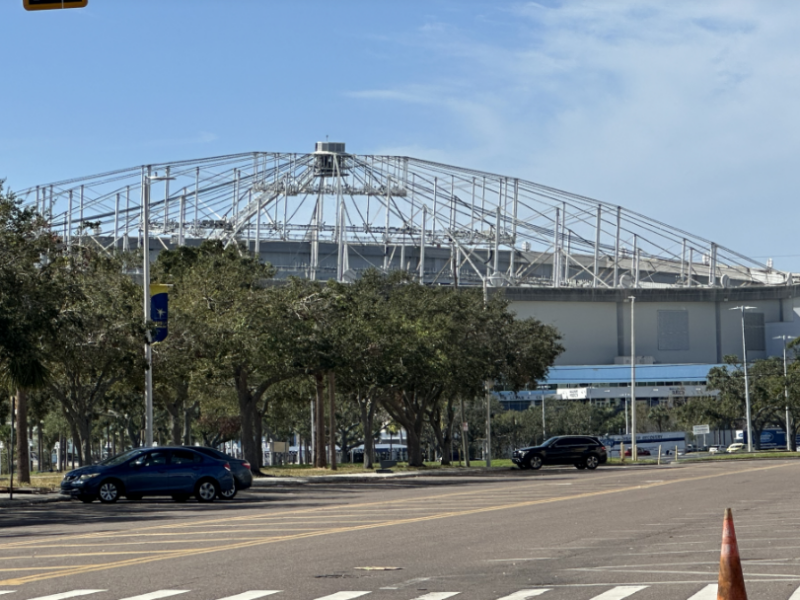Courtesy of Nicole Brand
By Alisha Durosier
More than a year after protests halted USF’s development plans for the Forest preserve, the preservation’s success raises questions about the protection of other green spaces on the Tampa campus.
“I was very, very proud that we pushed this [preservation of the USF Forest reserve] so far into the public conversation that, not only did we protect the property, but we, you know, hopefully put it in a better position than it was before any of this took place,” said Jeannie Mounger, USF Alumna. Mounger is a member of the organization known as, Save USF Forest Preserve, the grassroots initiative which advocated for the protection of the forest preserve.
After ceasing pursuit of the forest’s development USF implemented the Environmental Conservation Outreach Research and Education System (ECORE). The ECORE system oversees, protects, maintains and utilizes the botanical gardens, the USF Geopark and the USF Forest preserve, known as the University’s environmental assets.
“The Forest preserve which is 500 acres and sits at the northeastern corner of the USF Tampa campus in between the Claw and riverfront Park. Its most notable pieces are around 30 to 40 acres of sandhill, sandhill is a fire-dependent community,” ECORE Director, Nicole Brand said. “This particular piece of sandhill has not had regular prescribed burns in around two decades.”

More initiatives include the re-establishment and management of the greenway that was integrated into USF Tampa’s campus. A greenway is a strip of undeveloped land in an urban area.
“The conception of USF initially was to be able to have this sort of green scape that goes from, you know, one part of campus to the other,” Mounger said.
A greenway of some sort does exist on the USF Tampa Campus, connecting the botanical gardens to the forest preserve.
“This serves a very functional purpose for stormwater management. If you draw a line down the center from north to south, everything to the west, all of the water drainage flows into Lake Behnke in the botanical gardens and everything to the east flows into the forest preserve,” Brand said. “It has a secondary purpose of being an opportunity for students to have access to more green space on campus.”
Even with the few steps forward, there still are concerns regarding the athletic department’s expansion, specifically in regard to the proposed stadium.
“There’s hardly any buffer really between where this proposed stadium is going to go and all of the reserved area right on the other side of the street,” Mounger said.
“There are a lot of concerns about noise pollution, not just from the construction of the stadium, but from whatever kinds of events that might take place there. I imagine that it won’t just be football games that are held out there. I would anticipate that, they would hold concerts and other sort of loud events,” Mounger said. “And I would be quite concerned about noise pollution for all of the animals really in that corridor, but specifically any sort of issues pertaining to those migratory birds.”
The corridor Mounger mentions is where Hillsborough River meets Lettuce Lake Park.
“That’s a very important corridor for migratory bird species that are coming all the way from the Arctic down to South America. It’s a very, very crucial pinch point for those migratory birds,” Mounger Said.
Other concerns include congestion and traffic the proposed stadium could cause.
“Going back several decades, there was at one-point plans to widen Fletcher Avenue and the reason that that road isn’t widened is because of that very sensitive habitat that’s in the forest preserve,” Munger said.
The forest preserve is located right along Fletcher Avenue.
“What USF’s plans are to alleviate potential congestion because my assumption would be that they first thought is to widen Fletcher Avenue,” Munger said. “That would significantly impact this imperiled sandhill that is out at the forest preserve.”
As USF pursues environmental preservation along with urban development, there is no clear indicator of what takes precedence, with the speculation that the golf course next to the USF Forest Preserve will be up next for development.
“That’s another really beautiful piece of property that if it’s not revenue generating as a golf course, there’s a lot more that could be done to keep it green,” Mounger said.



